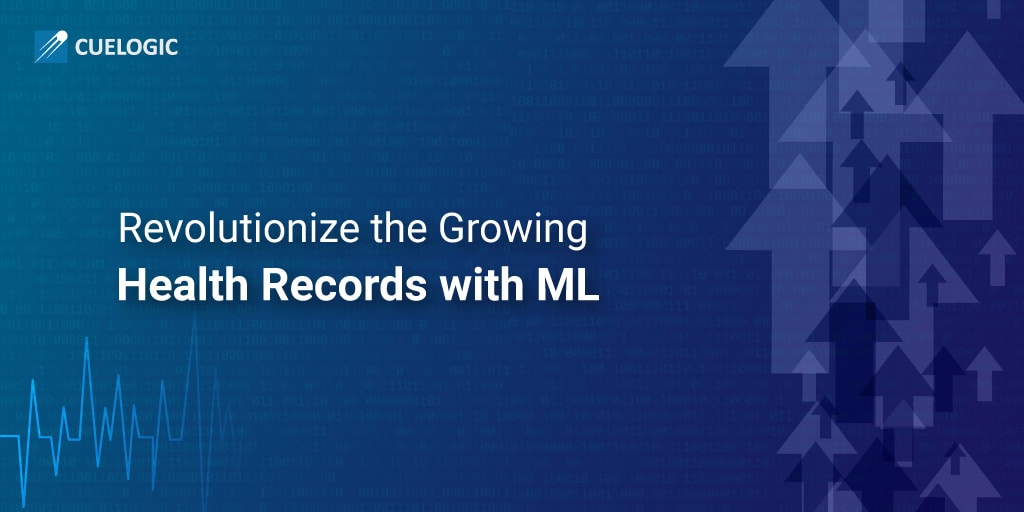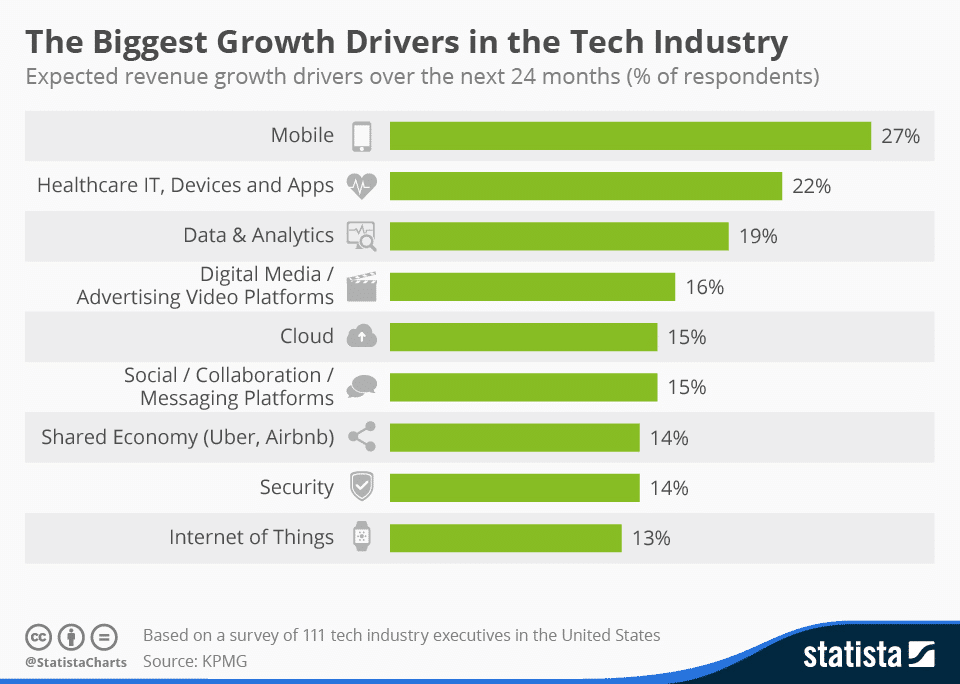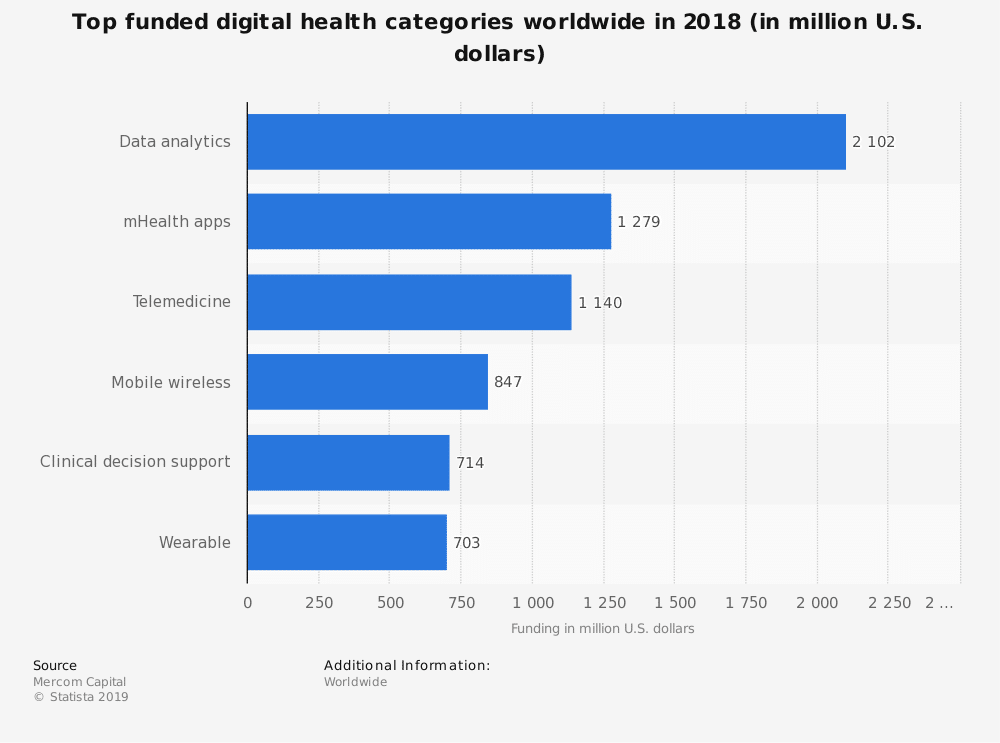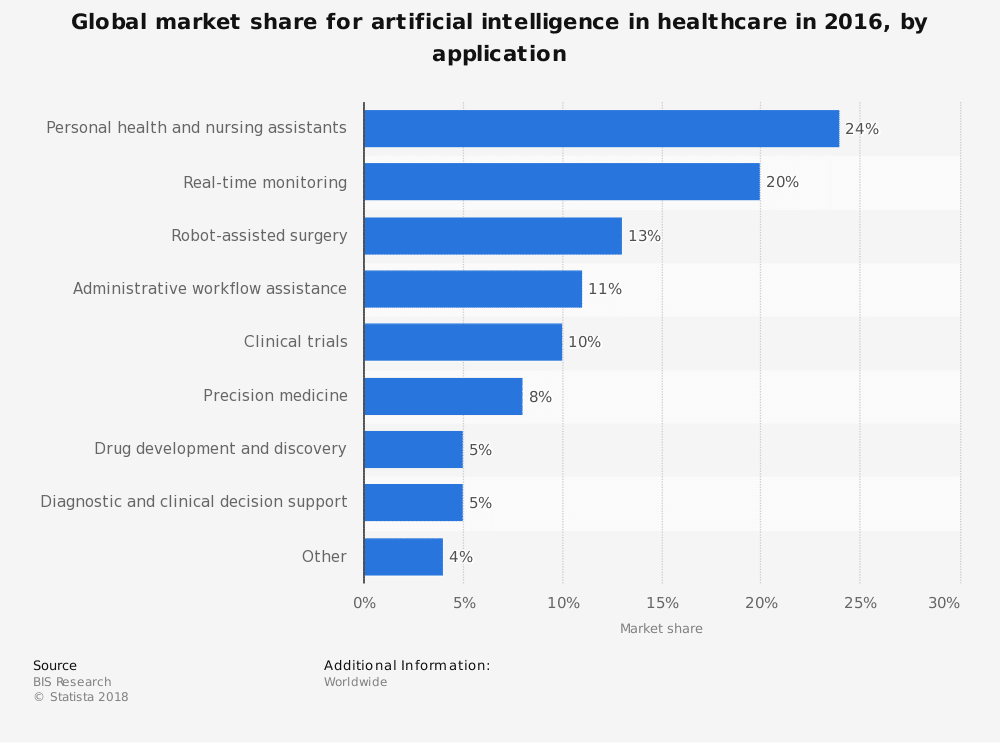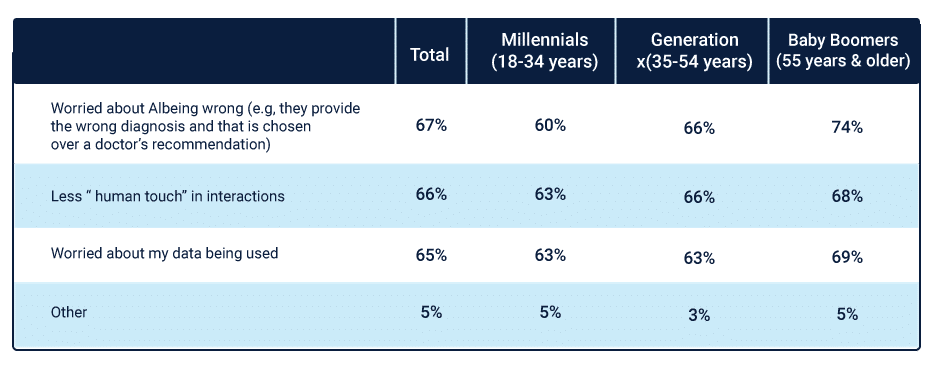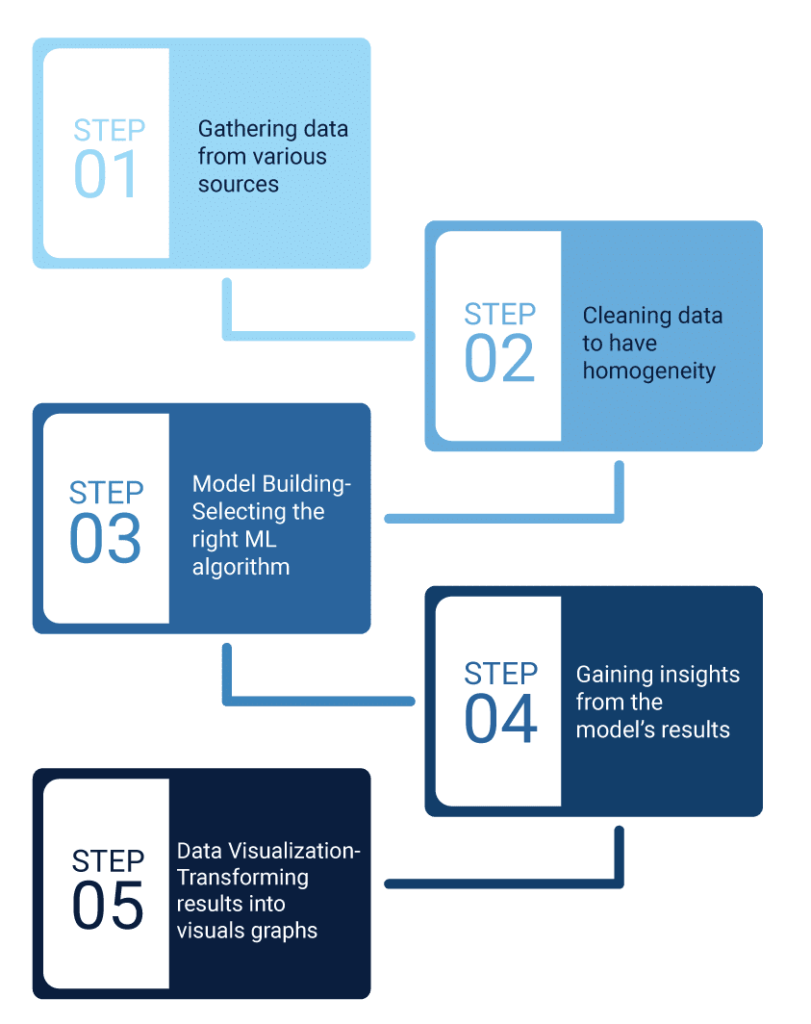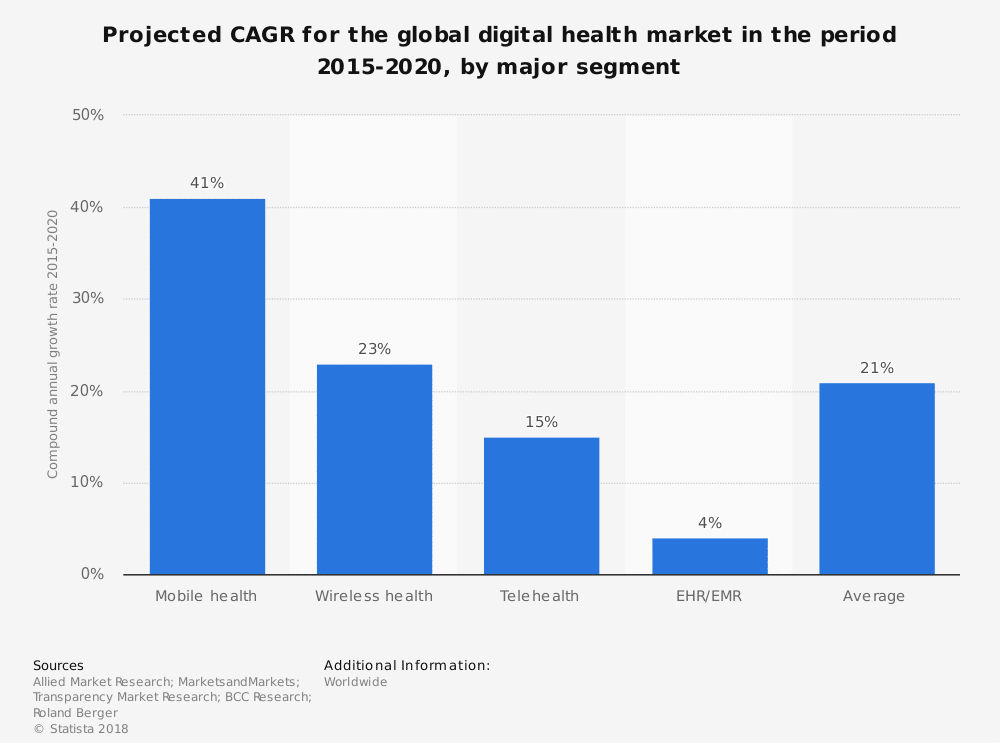Health has always been a prime element of the wellbeing. This has made Medicine an essential part of the society, every since time immemorial. Although it has come through a long journey in the past centuries, where it evolved from being traditional to bringing up modern practices.
Health sciences have now come to that point where they are leveraging other disciplines of science and technology to offer the best of medical facilities to the patients. Medicine is not just a subject of human anatomy anymore but has now become an interdisciplinary industry that targets to serve the wellbeing of mankind at its best.
One such discipline that contributes to the emerging health science solutions is Machine Learning. It has helped maintaining health records data for the patients, helping the medical practitioners to treat their patients in a more efficient manner.
To have an in-depth understanding of how Machine Learning is continuing to revolutionize the health services with the growing electronic records and its future scope, let us get a clear picture of the basics first.
To do so, let us begin with
- tracking the evolution of health sciences in the last few decades,
- how health sciences emerged by leveraging the power of technology,
- significance of personalization in healthcare
- importance of data in providing healthcare.
- major challenges that are yet to be solved
- what is Machine Learning
- how Machine Learning could be useful in managing the ever-growing health data challenges
- future scope of Machine Learning in revolutionizing health data records and its services
Evolution of Health Science
As technology became an inevident part of our modern day-to-day lives, it has given its Midas touch to several industries, transforming them for the betterment. One of it has been the healthcare industry which has witnessed a dramatic transformation with the help of technology, making it advance its practices to the behest of its users.
The major concern in front of health science as it grew, was that of accessibility. As the population grew and subsequently the demand for better healthcare facilities, traditional practices started to fall short.
Patients could not access quality treatment as their past medical history mostly remained unknown for many reasons. One among them was the use of physical records, which were high inaccessible, especially, when the patient was not present in the past location.
This created major issues, mainly, the patients could not be given personalized treatment, which could be given considering all their past medical issues. Due to this, many times, the treatments remained ineffective, as diagnosis became difficult.
It gave rise to a persistent urge to improve the medical facilities and enhance the healthcare industry as a whole, which clearly needed a revolution.
This revolution came in the form of technology, which worked on several fronts to improve the overall healthcare services.
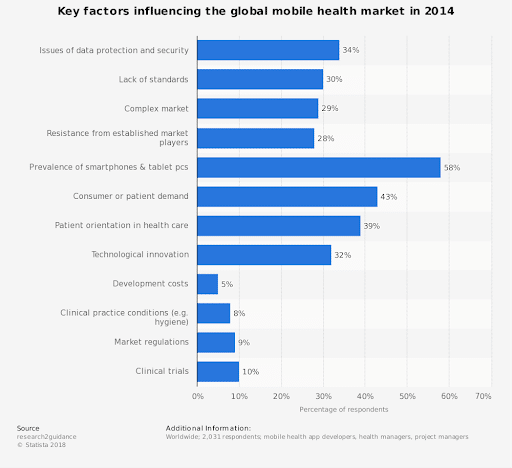
Even the study conducted by statista in 2014, proves this point, as the several key factors that acted as the driving force for the global mobile health market included quality, security concerns, technological advancements, market complexities and innovation among some of the listed factors.
This is how healthcare evolved with the help of technology, especially in the last few decades, as technology grew rapidly, aiming to deliver better.
How Health Science leveraged the power of Technology
Healthcare industry has revolutionized its operations by leveraging the power of technology, be it in research, patient management or diagnosis, technology has given firm support to the health sciences for them to grow.
As per a 2015 report from Statista in partnership with KPMG, Healthcare has been projected as one of the leading growth drivers in the tech industry for the next 2 years. This clearly depicts the fact that healthcare has left no stone unturned to leverage the power of technology in recent years to pacify its growth and enhance the quality of the services delivered.
One of the greatest examples of technology being used to enhance healthcare operations is the advent of EHRs (Electronic Health Records). While earlier the patient’s medical records including prescription, medical reports, etc. were all maintained in the physical form. These physical records were very difficult to maintain, as the chances of them getting damaged or lost were on a higher side.
Another major challenge was access to them. It was a humongous task to find these physical records amidst the huge pile of other records, that made it very difficult to access them in time, given a large number of patients that visited every day. This way, these records can hardly be used in a regular practice, until some serious case occurred.
Electronic Health Records have been successful in solving this major issue which persisted over the years in the healthcare industry. EHRs have made the medical records not only easily accessible but transferrable too, where the patient’s reports could be accessed across different locations, removing all the location constraints.
Over the recent few years, the use of technology in healthcare has increased with the advent of technologies such as Artificial Intelligence, Big Data, and Machine Learning, which have individually made significant contributions in the overall development of the healthcare industry.
Significance of Personalization in Health Sciences
Health sciences are all about extending personal care to ailing patients that suffer from individual medical conditions. Since most of the patients have a medical history that varies from others, it is important to proceed with a personalized approach to provide healthcare, wherein individual medical needs and past history has to be considered before providing any medication.
Including personalization in health sciences will not only improve the quality of the services provided but would also ensure the right medical treatment is given to the patient as per the medical needs. This enhances the overall rate of patients getting cured by leveraging the medical facilities that are provided to them.
That is why personalization in providing health services is highly essential to ensure the quality of healthcare services are provided for the overall well being of society.
Importance of Data in extending personalized Health Services
To fulfill the aim of providing personalized healthcare to the patients, it is essential that you must have their past medical records, that you could refer, whenever they approach seeking any kind of medical treatment.
Until and unless you do not have a combination of sound and updated Medical Knowledge, Research and patient’s medical record, as a medical practitioner, you will not be able to provide an effective treatment to the patient.
It is due to the growing demand to provide high-quality healthcare services, that the industry has started to acknowledge the power of data and have begun investing heavily into it.
Among the other technologies that are helping the healthcare sector, Data Analytics is the topmost funded digital health category in the world as per the 2018 report by Statista.
With a whopping $2102 million being funded, Data Analytics is far ahead of the other technologies, clearly indicating the fact that the data is highly important to provide quality digital health services.
On the other hand, by application of Artificial Intelligence in healthcare, trades such as Personal health and Nursing assistants, Administrative workflow assistance, Clinical trials, Diagnostic and Clinical decision support, which are dependent on the medical data records, form a considerably large share in 2016, according to a report.
Based on the two reports, mentioned above in this section, which covers different aspects of technology use in the healthcare industry, one can clearly infer the fact that Data plays a major role, as each one of them clearly suggests.
And thus, it is very crucial to ensure that the medical data is well stored and managed, in order to meet industry demands and expectations to provide top class healthcare services. But, this is not an easy road, one has to witness its own share of challenges that are to be met.
Before we assert to having been optimally leveraged the data to revolutionize healthcare, we must overcome these challenges that are posed as the health data grows bigger by the day.
Major challenges that are yet to be solved as the Health Data Grows
Among some of the major challenges that are yet to be solved are the data accessibility and security concerns. Both of them are very crucial and needs to be addressed soon if you are looking forward to creating a revolution in the healthcare industry using technology in the truest sense.
As of now, although the electronic health records have been introduced, which have successfully solved the issue of portability, yet accessibility is still difficult to a major extent. Medical data is accessible to the patient only through the medical staff, which could be a concern if the patient is looking forward to going for a second opinion.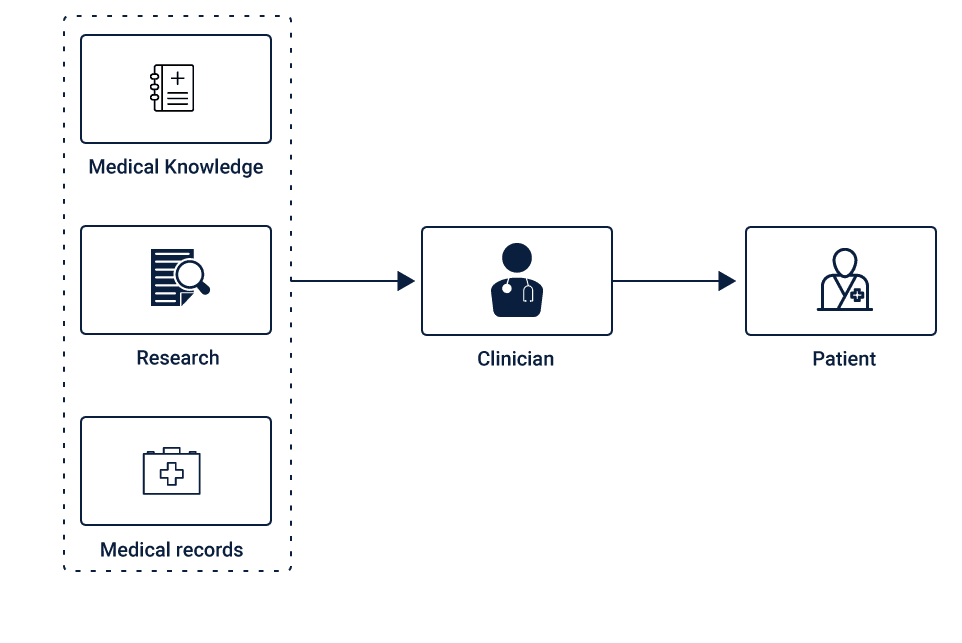
There is another major concern pertaining to low accessibility, i.e. the difficulty in finding the data past records to link them with the current medical condition while prescribing treatment.
Since most of the times medical data inputs come through different resources, the data remain largely unstructured, and it gets stored in the same way most of the times. This creates inconsistency when the same data that is stored with different data types are searched while referring. It causes an unnecessary discrepancy in the results, lowering the accuracy.
It also becomes difficult to find the relevant data records, when it is required while the clinical consultation and diagnosis takes place.
Apart from these, cybersecurity is another key challenge that is yet to be resolved. As the technology grew, and with it grew the threat of attacks, breach, and intrusion. Consequently, people have become reluctant to share their medical data fearing the cyber attacks, are creating a major gap in the management of growing electronic health records.
While on the other hand, actual data theft and cyber threats are a reality, which needs to be addressed to make the electronic health records management more seamless and secure, thereby, improving the overall functionality.
What is Machine Learning?
Machine Learning, which is a trade of Artificial Intelligence, aims to enable the machines in automatically learning from the surroundings and improving their ongoing functionality. This is done from the experience by interacting with the surroundings, without having being programmed explicitly.
Machine learning is very dynamic in nature as it aims to adapt as per the present scenario, so as to enhance the future experience.
To make the machines learn themselves without any explicit human interference, computer programs are built in such a way that the system extracts data and access to adapt accordingly.
Machine Learning performs its tasks without taking any explicit set of instructions or human intervention with the help of statistical models and algorithms. On the contrary, it relies on the patterns that are generated in the past.
These patterns which are first collected via different sources are then conditioned using data modelling to enable the machine for making predictions or decisions. It is these predictions or decisions that decide the future course of the system’s behaviour.
In machine learning, the developer is not required to explicitly program the machine for each of the tasks, instead, the machine itself prepares itself for the future by taking cues from the set of tasks done in the past.
Personalized services are largely based on Machine learning. It intends to extract as much as possible user data via regular engagements and uses it to understand the pattern of user behaviour in order to give a highly personalized experience the users.
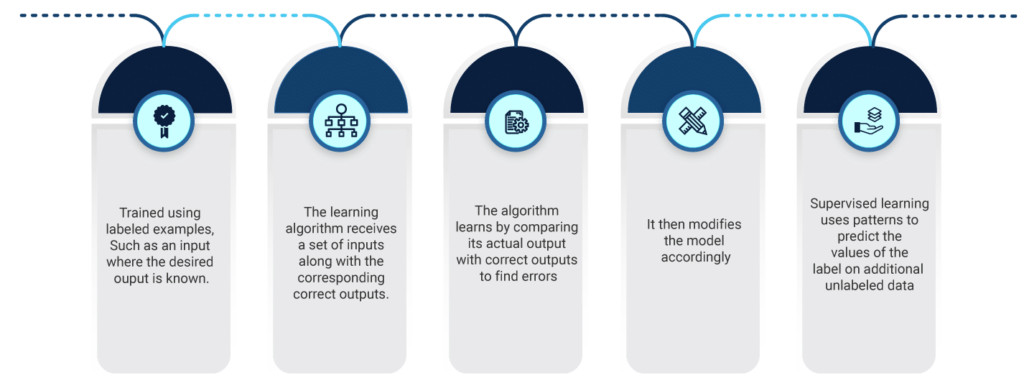
There are several learning algorithms such as Supervised, Unsupervised, Semi-supervised and Reinforcement machine learning algorithms, which are used in machine learning, depending upon the set task they are entitled to perform, and the type of data inputs and outputs of the system.
How Machine Learning can be used to manage growing Health data challenges
Machine learning can be used in multiple ways to manage growing health data challenges and make the system more efficient in practice. Here are some of the Machine learning applications that are helpful in optimizing existing healthcare practices:
-
Data Mining
Data Mining is very much helpful in managing the quality of data inputs by finding out the relevance of the record and storing it only once it is conditioned to ensure the overall consistency of the data type.
It works on the different fronts of data such as Predictive, Diagnostic and Prescriptive to ensure that the relevance between these is established and remains maintained at any point of time, to make the process seamless.
-
Predictive Analysis
Machine learning uses past data to predict the future. In this way, it analysis the past data to come out with the prediction of future medical conditions that might occur. This helps in alerting the patient to observe prevention beforehand.
-
Diagnostic Analysis
It analyses different medical reports to shortlist the possible medical conditions, assisting the medical practitioners in diagnosing possible ailment in the patient. A better diagnosis would mean better treatment for the patient.
-
Prescriptive Analysis
Based on the predictions, diagnosis, and the past medical history, machine learning analyzes and helps in prescribing the most suitable combination of medicines that could help the patient cure better.
This works especially when the patient has a past history of allergies to a certain combination of medicinal drugs.
-
Semantic Search
Machine learning supports the semantic search of the data, making it even more relevant to find the accurate path when the volume of the medical data is humongous and largely unstructured.
In this way, Machine Learning algorithms, play a major role in revolutionizing the growing Electronic Health Records.
Future Scope of Machine Learning in revolutionizing Health Data and its Services
With the data analytics is already put to work as the Electronic Health Records were introduced, the future of the healthcare market lies in the fact, that how soon we overcome the challenges of optimizing data and move ahead. The sooner the better.
While a projected CAGR for 2015-2020 for the global digital health market, points out towards the newly emerging areas such as Mobile Health, Wireless Health, and Telehealth as one can observe the electronic health records is in the progress of optimization.
What remains interesting is the fact, that Machine Learning still holds a significant place, as it would be responsible for bringing personalization factor in these areas of future development.
The patients would expect to gain virtual personalized checkups and consultation with the help of upcoming channels such as mobile applications, wireless media, and telephone in the future.
This will be opening new areas of prospects for Machine learning to develop and come up with new solutions, as it has done in the case of medical data.
And thus, it would be interesting to witness how Machine Learning would not only assist in managing the medical data efficiently but also would open new avenues of development with time, as the electronic health records grow.
Must Reads:[wcp-carousel id=”10007″]
